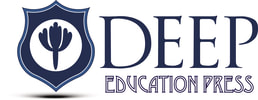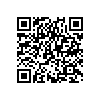Signs and Symbols in Education: Educational Semiotics
Dr. Francois Victor Tochon
|
Educational theories are always changing but end up sounding similar to those they aim to replace. This book is different, opening up exciting new vistas that show how learning is a fundamentally semiotic (sign-governed) process. It does not simply rename traditional psychological and educational concepts with the terminology of semiotics, rather, it penetrates the essence of the human brain through the template of semiotic theory in order to expose those processes within it that are relevant to how we all learn. The implications are enormous. This is a brilliant book and should be read not only by semioticians and educators, but also by anyone who wants to understand how we learn above and beyond the instinctual biological system with which we are endowed.
Marcel Danesi, Professor of Linguistic Anthropology, University of Toronto, author of “Encyclopedic Dictionary of Semiotics, Media, and Communications” |
Learning is meaning-making, in all levels of life. Educational semiotics studies the deep mechanisms of semiosis in learning and teaching processes in humans. Tochon does this in practice.
Kalevi Kull, Professor of Semiotics, University of Tartu, coauthor of “Towards a Semiotic Biology: Life is the Action of Signs” What does semiotics, often seen as a recondite and abstract theorization of how symbols function, have to say to educators trying to do the difficult job of supporting student learning? Francois Tochon offers us a sampling of practical teaching and research tools based in semiotic principles that help move education away from fixed methods, best practices, and rigid content standards toward understanding learning as coming at meaning sideways and creatively, always re-defining, re-imagining, and improvising for our own purposes here and now. Educators and education researchers sorely need to learn this lesson. Jay Lemke, Department of Communication, University of California–San Diego; author of “Talking Science: Language, Learning,” and “Values and Textual Politics: Discourse and Social Dynamics” |
|
Educational Semiotics is a highly original work of scholarship. In four ingeniously designed studies, Francois Tochon demonstrates how semiotic analysis can be used to deconstruct the professional learning experiences of preservice teachers. These studies offer startling insights into the creative application of semiotic methods, the understanding of long standing issues in teacher education, and the nature of learning in situated contexts. Thus, this book is helpful to semioticians, teacher educators, and all those interested in how professionals learn through experience. The genius of Tochon’s work is his skillful application of semiotic methods to frame and probe the depths of well-known problems in teacher education, such as how teachers learn through practice. The implications of his work are profound and their potential for further investigation is enormous. In essence, Tochon is pointing the way to a new field of endeavor that he has termed Educational Semiotics.
John Henning, former President of Semiotics in Education at the American Educational Research Association, Ohio University, author of “Using Action Research to Improve Instruction” |
Semiotic inquiry is an ever-evolving construction and work such as Tochon’s raises contemporary questions about the search for meaning and the processes through which we make meaning. His work demonstrates that meaning classifications are not products of a static system, but rather dynamic events which reshape their organizing as a continuous process of meaning creation. The four studies in this book are rich, flexible, and reflect critical knowledge transformation. In addition to illustrating new ways to approach semiotic research, Tochon’s innovative reasoning insists that we reorganize our intuitive assumptions and reanalyze our insights with regards to our semiotic understandings about learning and teaching.
Elvira Katić, Executive Director of the Semiotic Society of America, Associate Professor of Education, Ramapo College of New Jersey, author of “Technology and the Inner Eye” The eBook is available here: www.smashwords.com/books/view/521243 |




